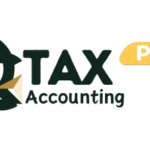Online bookkeeping and tax filing powered by professional humans.
Maximize Retirement Savings: Small Business Owners’ Guide to IRA Contributions by April 15
April 3, 2024
Operations
What’s QCTaxpro?
Friends don’t let friends do their own bookkeeping. Share this article.
Recent Post
Have Any Question?
Contact us Anytime Below!

Understanding Individual Retirement Account (IRA) contributions is crucial for small business owners seeking to maximize their retirement savings. With the April 15 deadline approaching, it’s essential to grasp the basics and make informed decisions. In this guide, we’ll cover everything you need to know about IRA contributions to help you navigate the process effectively.
Key Aspects of IRA Contributions:
1. Types of IRAs:
Explore the different types of IRAs available, including Traditional IRAs, Roth IRAs, SEP IRAs, and SIMPLE IRAs, to determine which best aligns with your financial goals and circumstances.
2. Contribution Limits:
Understand the contribution limits set by the IRS for each type of IRA, including annual limits and catch-up contributions for individuals aged 50 and older, to ensure compliance and maximize your savings potential.
3. Deadline Reminder:
Be aware of the April 15 deadline for IRA contributions for the current tax year, ensuring you make timely contributions to qualify for tax benefits and retirement savings opportunities.
Strategies for Small Business Owners:
1. Tax Benefits:
Explore the tax advantages offered by IRA contributions, such as tax-deferred growth, potential tax deductions, and tax-free withdrawals in retirement, to optimize your retirement planning and minimize tax liabilities.
2. Employer-Sponsored Retirement Plans:
Consider the availability of employer-sponsored retirement plans, such as 401(k) or SIMPLE IRA plans, and evaluate their compatibility with IRA contributions to create a comprehensive retirement savings strategy.
3. Contribution Planning:
Develop a contribution plan that aligns with your financial goals, cash flow considerations, and long-term retirement objectives, ensuring consistent and strategic contributions over time.
Action Steps Before April 15:
1. Review Eligibility:
Verify your eligibility for IRA contributions based on factors such as income, employment status, and participation in employer-sponsored retirement plans, to determine your contribution options.
2. Calculate Contributions:
Calculate the maximum allowable contributions for the current tax year based on IRS guidelines and your individual circumstances, ensuring compliance with contribution limits and tax regulations.
3. Make Contributions:
Take action to make IRA contributions before the April 15 deadline, leveraging available contribution methods such as electronic transfers, check deposits, or payroll deductions, to secure tax benefits and retirement savings.
Conclusion:
IRA contributions play a vital role in small business owners’ retirement planning, offering tax advantages and long-term savings opportunities. By understanding the basics of IRA contributions and taking proactive steps before the April 15 deadline, you can optimize your retirement savings strategy and work towards financial security in retirement.
(Note: Consult with a financial advisor or tax professional for personalized guidance and advice tailored to your specific financial situation and retirement goals.)
Friends don’t let friends do their own bookkeeping. Share this article.
Related Posts
Tax-Saving Secrets Every Entrepreneur Needs to Know in 2025
If you’re an entrepreneur, you’re not just building a business — you’re also managing your finances, making tax…
17 Big Tax Deductions (Write-Offs) for Businesses in 2025
If you run a small business, self-employed gig, or LLC, understanding your tax deductions can save you a…
The Very Best Small Business Loans in 2024
Introduction Securing the right financing is crucial for the growth and sustainability of any small business. In 2024,…




